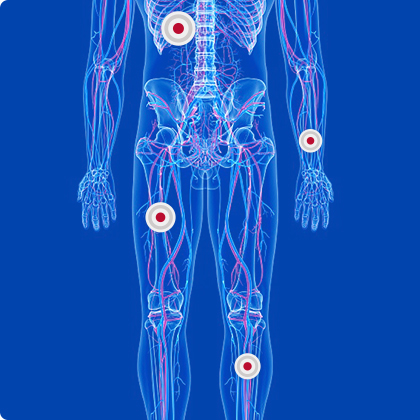What Devices for Vascular Interventions Are There?
(2022年)https://www.zyloxtb.com/healthcare-professionals/microcatheter-for-clot-retriever/
Commonly used equipment for vascular interventional diagnosis and treatment should include guide wires, catheters, balloon dilatation catheters, intravascular stents and stent grafts, filters, and various puncture devices.
1. Puncture needles of vascular interventions: generally include ordinary puncture needles and special puncture needles
Ordinary puncture needles are further divided into single-wall puncture needles and trocar puncture needles. Generally, the length of the needle is 7cm, the diameter of the needle is 18-19G, and the guide wire of 0.015 in--0.038in can be inserted. Single-wall puncture needles are made of single-part stainless steel with a beveled tip and are mainly used for puncturing the anterior wall of blood vessels.
The trocar puncture needle is composed of an outer cannula and a needle core. At present, the commonly used needle cores are mostly hollow needles. The outer cannula is made of plastic, the puncture needle is inserted into the lumen of the blood vessel, the needle core is removed, the outer cannula is indwelled in the lumen, and then the guide wire is fed along the lumen of the outer cannula. It is often used for puncture of common parts of peripheral arteries and veins.
Another micro-puncture trocar is mainly used for smaller arteries such as the brachial artery and radial artery. The diameter of the needle is 21G, and the 0,018in guide wire can be passed through the needle lumen. Special puncture needles mainly include atrial septal puncture needles (such as Brockenbrough puncture needles) and TIPSS special puncture needle sets, both of which are puncture devices with the cannula.
2. The choice of the guide wire for vascular interventions
The guide wire is the "pioneer" for entering human peripheral blood vessels. Its role is to:
① Import function;
② support function;
③ Open function;
④ exchange effect.
The surface of the guide wire currently used is generally covered with a hydrophilic film to ensure its lubricating passage in the lumen of the blood vessel. Often divided into ordinary (soft) guide wire, hardened guide wire, and special micro guide wire.
3. Selection of the catheter for vascular interventions
There are many types of catheters used for interventional diagnosis and treatment of peripheral vascular diseases, which can be divided into diagnostic angiography catheters and therapeutic catheters. Diagnostic angiography catheters can be further divided into selective angiography catheters and non-selective angiography catheters. Among them, commonly used non-selective angiography catheters are multi-hole pigtail angiography catheters and multi-sided hole straight-head angiography catheters. Its maximum flow rate can reach 20-25ml/s.
Zylox Medical is also building a comprehensive product portfolio covering both arteries and veins, including stents, balloons, catheters, filters, and more. As of April 2022, 6 products of ZyloxMedical have obtained NMPA approval, and 5 products have obtained EU CE certification. In the future, we will continue to provide patients and doctors with more comprehensive and efficient products and solutions.
Zylox medical is a leading player in the peripheral and neurovascular interventional medical device market in China. We provide microcatheters for embolization, neurovascular microcatheter, etc. If you want to know microcatheter uses or microcatheter types, contact us.
- «前のできごと |
- 次のできごと»
- このできごとのURL:



コメント